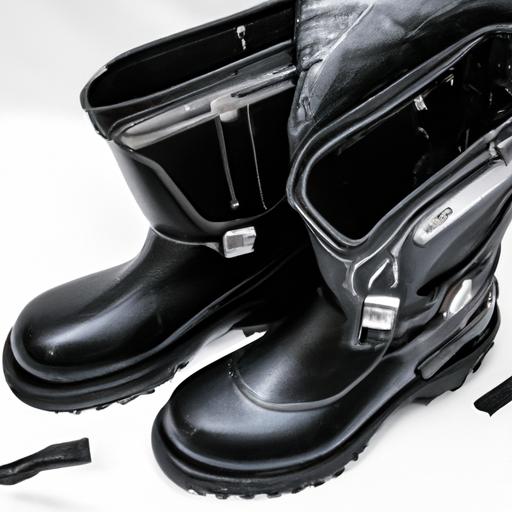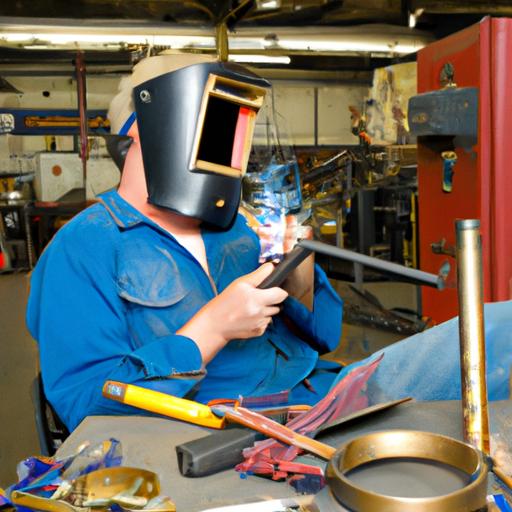Millermatic 211 Problems: Troubleshooting Guide for Optimal Welding Performance
Introduction
Are you a proud owner of the Millermatic 211 welding machine? Well, let me tell you, you’ve made an excellent choice! The Millermatic 211 is renowned for its versatility, power, and precision, making it a top choice for both beginners and professionals alike. However, even the best machines can encounter problems now and then, hindering your welding experience. That’s where I come in – to help you troubleshoot and overcome any millermatic 211 problems you may encounter.
Why Addressing and Troubleshooting Common Problems is Vital
Imagine this: You’re in the middle of a crucial welding project, and suddenly, your Millermatic 211 starts acting up. Frustrating, right? These problems can lead to poor weld quality, reduced productivity, and even safety hazards. By promptly addressing and troubleshooting these common issues, you can ensure optimal welding performance, uninterrupted workflow, and remarkable results.
In this comprehensive guide, I will walk you through the most common problems faced by Millermatic 211 users and provide you with expert tips and techniques to overcome them. So, grab your welding helmet and let’s dive right in!
Stay tuned for the upcoming sections where we will cover everything from understanding the Millermatic 211 welding machine to preventive measures you can take to avoid problems. We’ll also discuss when it’s time to seek professional assistance to tackle more complex issues.
Remember, the key to achieving flawless welds lies in your ability to troubleshoot and resolve problems effectively. Let’s get started on this journey towards seamless welding with your Millermatic 211!
Understanding Millermatic 211 Welding Machine
Overview of Millermatic 211 Features and Capabilities
When it comes to welding machines, the Millermatic 211 stands tall among its competitors. This powerful and versatile machine is designed to meet the needs of both hobbyists and professional welders. Equipped with advanced technology, the Millermatic 211 offers a seamless welding experience and exceptional performance.
One of the standout features of the Millermatic 211 is its ability to operate on both 120V and 240V power sources, providing flexibility and convenience. Whether you’re working in your garage or on a job site, this machine adapts to your power requirements with ease. Additionally, it offers a welding output range of 30 to 230 amps, allowing you to tackle a wide variety of welding projects.
The Millermatic 211 also incorporates Auto-Set™ Elite, a feature that simplifies setup by automatically determining the appropriate parameters for your welding application. It takes the guesswork out of choosing the right wire speed and voltage settings, making it ideal for beginners who are still mastering the art of welding.
Highlighting Popularity and Widespread Usage
It’s no surprise that the Millermatic 211 has gained immense popularity and widespread usage within the welding community. Its reliability, durability, and exceptional performance have made it a favorite among professionals and enthusiasts alike.
Whether you’re a DIY enthusiast working on home projects or a professional welder handling heavy-duty tasks, the Millermatic 211 is a reliable companion for all your welding needs. Its versatility allows you to weld a variety of materials, including steel, stainless steel, and aluminum, making it suitable for a wide range of applications.
The Millermatic 211 has received high praise for its user-friendly interface, intuitive controls, and smooth arc characteristics. It delivers precise welds with minimal spatter, ensuring clean and professional-looking results. With its reputation for excellence, the Millermatic 211 has become a go-to choice for welders seeking superior performance and unmatched reliability.
In the next section, we will delve into the common problems that users may encounter with the Millermatic 211. Stay tuned as we explore troubleshooting techniques to overcome these challenges and maximize the potential of your welding machine.
Common Problems with Millermatic 211
When it comes to the Millermatic 211, there are a few common problems that users often encounter. By understanding and addressing these issues, you can ensure smooth welding performance and achieve impeccable results. Let’s take a closer look at the most frequently encountered problems and their impact on your welding experience.
1. Erratic Wire Feeding
One of the primary issues Millermatic 211 users face is erratic wire feeding. This problem can result in irregular welds and poor bead formation. It may be caused by factors such as improper drive roll tension, incorrect wire size, or a faulty wire feeder.
To resolve this problem, start by ensuring that the drive roll tension is properly adjusted according to the wire diameter. Check for any obstructions or kinks in the wire and make sure it feeds smoothly. Additionally, inspect the wire feeder for any signs of damage or misalignment.
2. Inconsistent Arc Ignition
Another common problem is inconsistent arc ignition, which can lead to unstable arcs or difficulty initiating the welding process. This issue can be attributed to incorrect power settings, improper ground connection, or a worn-out contact tip.
To address this problem, double-check your power settings to ensure they are appropriate for the materials and thickness you are welding. Verify that the ground clamp is securely attached to a clean and conductive surface. Lastly, inspect the contact tip for any signs of wear or damage and replace it if necessary.
3. Burnback Issues
Burnback, characterized by the wire sticking to the contact tip and causing molten metal to back up into the torch, can be a frustrating problem. It is often caused by improper wire speed, excessive voltage, or a contaminated contact tip.
To tackle burnback, adjust the wire speed to the appropriate setting for the welding process and material thickness. Ensure that the voltage is within the recommended range for your specific welding application. Lastly, regularly clean the contact tip to prevent any debris buildup that may lead to burnback.
By understanding these common problems and their impact on welding performance, you are better equipped to troubleshoot and resolve any issues that may arise with your Millermatic 211. Stay tuned for the next section, where we will delve into the step-by-step process of troubleshooting these problems effectively.
Troubleshooting Millermatic 211 Problems
Step-by-Step Guide to Diagnosing and Resolving Common Issues
When your Millermatic 211 encounters problems, it’s crucial to follow a systematic approach to diagnose and resolve them efficiently. Here’s a step-by-step guide to help you troubleshoot your welding machine like a pro:
1. Identify the Problem
Start by identifying the specific issue you’re facing. Is it poor arc quality? Erratic wire feed? Irregular voltage output? Pinpointing the problem will guide you towards the appropriate solution.
2. Check the Power Source
Ensure that your Millermatic 211 is receiving a stable power supply. Check the circuit breaker, power cord, and outlet connections for any loose connections or faults. A consistent power source is vital for optimal machine performance.
3. Examine the Welding Gun and Wire Feeder
Inspect the welding gun and wire feeder for any signs of damage or blockage. Ensure the gun nozzle is clean and free from debris, as obstructions can disrupt the wire feed and affect weld quality.
4. Verify Wire and Gas Settings
Check that the wire and gas settings are correctly configured. Ensure your wire diameter matches the machine’s specifications and that the gas flow rate is appropriate for the welding process you’re using. Incorrect settings can lead to poor weld penetration and quality.
5. Inspect Consumables
Regularly inspect and replace worn-out consumables such as contact tips, nozzles, and drive rolls. Damaged or worn consumables can cause wire feed issues and affect the overall performance of your Millermatic 211.
6. Consult the User Manual and Online Resources
If you’re unable to identify or resolve the problem, refer to the Millermatic 211 user manual for troubleshooting guidelines specific to your machine. Additionally, Miller Electric’s website and online forums provide a wealth of information and support from experienced users who may have encountered similar issues.
Providing Practical Tips and Techniques for Effective Troubleshooting
To enhance your troubleshooting process, here are some practical tips and techniques that can help you overcome common Millermatic 211 problems effectively:
a. Keep a Maintenance Schedule
Regularly clean and inspect your Millermatic 211 to prevent the accumulation of dust, debris, and spatter. Consider creating a maintenance schedule to ensure timely checks and replacements of consumables.
b. Maintain Proper Wire Tension
Check and adjust the wire tension as per the manufacturer’s recommendations. Proper tension ensures smooth wire feed and minimizes the risk of birdnesting or wire jams.
c. Perform Test Welds
Before starting a critical project, conduct test welds on scrap metal to confirm that your Millermatic 211 is functioning optimally. This allows you to identify any potential issues beforehand and make necessary adjustments.
By following these troubleshooting steps and implementing the practical tips mentioned above, you can overcome common problems and maximize the performance of your Millermatic 211 welding machine. Remember, practice makes perfect, and with time, you’ll become adept at diagnosing and resolving any issues that come your way.
Preventive Measures for Millermatic 211 Problems
Importance of Regular Maintenance and Care
Regular maintenance is the key to ensuring the longevity and optimal performance of your Millermatic 211 welding machine. Just like any other piece of equipment, your Millermatic 211 requires attention and care to avoid potential problems. By dedicating some time to maintenance, you can prevent issues before they arise and keep your welding machine in top-notch condition.
1. Cleanliness is Key: Keep your Millermatic 211 clean by regularly removing dust, debris, and spatter that may accumulate during the welding process. Use a soft brush or compressed air to gently clean the machine’s external surfaces, cooling vents, and wire feed system.
2. Check and Replace Consumables: Inspect and replace consumables such as contact tips, nozzles, and liners regularly. These components play a vital role in ensuring smooth wire feeding and high-quality welds. Regularly inspecting and replacing worn-out consumables will prevent feeding issues and improve overall performance.
3. Lubricate Moving Parts: Lubricate the moving parts of your Millermatic 211 at regular intervals to reduce friction and ensure smooth operation. Refer to the manufacturer’s guidelines to identify the appropriate lubricants for different components.
Proactive Steps to Prevent Problems from Occurring
Prevention is always better than cure, and the same applies to Millermatic 211 problems. By taking proactive measures, you can significantly reduce the chances of encountering issues during your welding projects. Here are a few steps you can take to minimize the risk of problems:
1. Read the User Manual: Familiarize yourself with the user manual provided by Miller Electric, the manufacturer of Millermatic 211. The manual contains valuable information about machine setup, maintenance procedures, and troubleshooting techniques specific to your welding machine.
2. Optimize Power Settings: Ensure that you are using the appropriate power settings for your welding tasks. Using too high or too low power can lead to problems such as poor weld quality, distortion, or overheating. Refer to the user manual for recommended power settings based on the material thickness and type.
3. Proper Wire Selection: Choose the right type and diameter of welding wire for your specific application. Using the wrong wire can result in feed issues, inconsistent welds, and increased spatter. Refer to the material guidelines and recommendations provided by the manufacturer.
By following these preventive measures, you can minimize the chances of encountering problems with your Millermatic 211 and enjoy a seamless welding experience. Remember, a little maintenance and proactive care go a long way in keeping your welding machine in top shape.
Seeking Professional Assistance
When to Consult a Certified Technician
While the Millermatic 211 is designed to be user-friendly and reliable, there may be instances where you encounter more complex problems that require professional intervention. Knowing when to seek the expertise of a certified technician can save you time, effort, and potential damage to your welding machine.
If you have followed the troubleshooting steps diligently and the issue persists, it may be an indication that a deeper underlying problem exists. Additionally, if you are unsure about the proper diagnosis or lack the necessary technical knowledge to address the problem, it is best to consult an expert.
Recommendations for Finding Reliable Service Providers
Finding a trustworthy and skilled technician is crucial to ensure the best possible resolution for your Millermatic 211 problems. Here are a few recommendations to help you find reliable service providers:
-
Manufacturer’s Support: Start by reaching out to Miller Electric, the manufacturer of Millermatic 211. They may have a dedicated support team or authorized service centers that can assist you. Check their website or contact their customer support for guidance.
-
Local Welding Suppliers: Contact local welding supply stores or suppliers. They often have connections with certified technicians or may even have an in-house repair service.
-
Online Welding Communities: Tap into the vast knowledge pool of online welding communities and forums. Seek recommendations from experienced welders who have faced similar issues with their Millermatic 211.
-
Certification and Experience: When selecting a technician, ensure they have the necessary certifications and expertise in repairing Miller welding machines. Look for technicians who specialize in Miller products or have received specific training.
Remember to inquire about service costs, turnaround time, and warranties offered before finalizing your decision. By investing in reliable service providers, you can have peace of mind knowing that your Millermatic 211 problems will be resolved by skilled professionals.
In conclusion, while troubleshooting Millermatic 211 problems on your own is commendable, there are situations where seeking professional assistance is essential. By knowing when to consult a certified technician and following our recommendations to find reliable service providers, you can ensure that your welding machine receives the care it needs, ultimately prolonging its lifespan and maximizing your welding performance.
Stay tuned for more insightful tips and preventive measures in our upcoming articles. Happy welding!



